AI Animation: A Huge Opportunity for AI Startups
-
In the current era where generative AI technology is driving industrial innovation, animation is one of the earliest industries to be noticed and affected.
Animation has always been a technology-driven industry. The development of computer graphics once triggered massive changes in animation's form, expressiveness, market, and industrial landscape. Today, the core issues of production capacity and business models in the animation industry are still constrained by technological capabilities.
The animation industry anticipates new transformations, which will inevitably be driven by technology. At present, it appears that this technology is AI.
For animation, especially 3D animation, AI is not a new concept. However, over the past year, from ChatGPT to Stable Diffusion and Midjourney, these advancements have颠覆ed many people's traditional understanding of AI.
Many animation companies and platforms have realized that AI can serve as a tool for commercial use, meeting more personalized demands and cultivating tailored capabilities for their content. This has also led animation companies with different positioning and business models to consider AI adoption more carefully.
Previously unimaginable models like daily releases due to production constraints, or as part of the IP industry chain, driving IP development rhythms with more economical investments, or establishing more universal workflows and material libraries to bridge production from animation to games—all these could become reality with AI's involvement.
When animators are freed from tedious, labor-intensive assembly-line work, the industry will become more driven by creative talent and explore new artistic paradigms.
This is a tremendous opportunity.
Of course, future opportunities come with present challenges. Transformation and innovation often involve trade-offs and adaptation pains.
The animation industry wants to seize the opportunity, but the timing and approach are key issues. A reasonable model for AI technology capabilities, application costs, and returns has yet to be established, and many uncertainties remain. In the near future, as technology develops, animation companies and platforms will continue to face decision-making dilemmas.
Regardless, the overarching direction is to embrace AI.
From a rational perspective, not every technological iteration will completely transform an industry. While still in the midst of change, the most important thing is not whether to adopt the technology or to what extent, but rather understanding the environment and trends to make the right judgments.
AI presents opportunities for animation companies, but failing to seize them could turn into a crisis. After all, technology is advancing rapidly. If AI suddenly becomes highly effective one day, no one wants to be left behind.
As early as 2021, when OpenAI released DALL·E, which generated an 'avocado-shaped armchair' based on text tokens, many in the animation industry took notice of AI. However, due to limitations in technology maturity, unclear talent requirements, and undefined applications, its use has mainly been limited to creative exploration.

Over the past year, the rapid iterations of Stable Diffusion and Midjourney have not only increased public awareness of AI but also facilitated its batch application across various industries, including animation. Companies are developing plugin tools based on Stable Diffusion's open-source architecture to suit their business needs, while Midjourney's continuously improving image generation capabilities have gained industry-wide recognition, particularly in creative and planning stages.
In August this year, Tencent Video released a trailer for "Chronicles of Magic: AI-Assisted Edition," touted as "China's first AI-assisted animation." As early as the 2023 Spring Festival period, Tencent Video had been exploring AI applications in animation production, eventually partnering with Red Dragon Pictures.
Animation has become a relatively stable commercial sector for Tencent Video. With industry costs largely fixed, their business model focuses on using animated content to consistently attract new users - the hotter the animation, the greater the returns. Popularity depends not only on content quality but also update frequency.
Ding Yu, founder of Red Dragon Pictures, explained that both parties saw value in exploring AI for animation production, whether for cost reduction or stylistic innovation. "After discussing in March, we began implementation in May."
Cost reduction and efficiency improvement remain the primary motivations for animation companies adopting AI at this stage.
Compared to 2D animation, the entire creative process of 3D animation heavily relies on digital platforms, providing greater opportunities for AI integration. However, both 2D and 3D animation share similar early-stage production workflows, including character and scene development, concept art, and keyframe animation. These stages are where AI applications are most deeply embedded, delivering particularly notable improvements in cost efficiency and productivity.
For instance, in character creation, Yu Tian, founder of ASK Animation which primarily focuses on 2D animation, noted that while the actual writing and drawing phases might take only a few hours, the preceding ideation process could previously span months. Now, with AI assisting in organizing ideas and sparking inspiration, this conceptualization time can be dramatically reduced.
The same applies to 3D animation. Zhang Xin, Technical Director of Black Rock Studio, revealed that their newly launched animation project this year incorporated more AIGC (AI-generated content) processes. The pre-production art phase took only about one-third or even less of the time compared to last year's project Armor of Ambition.
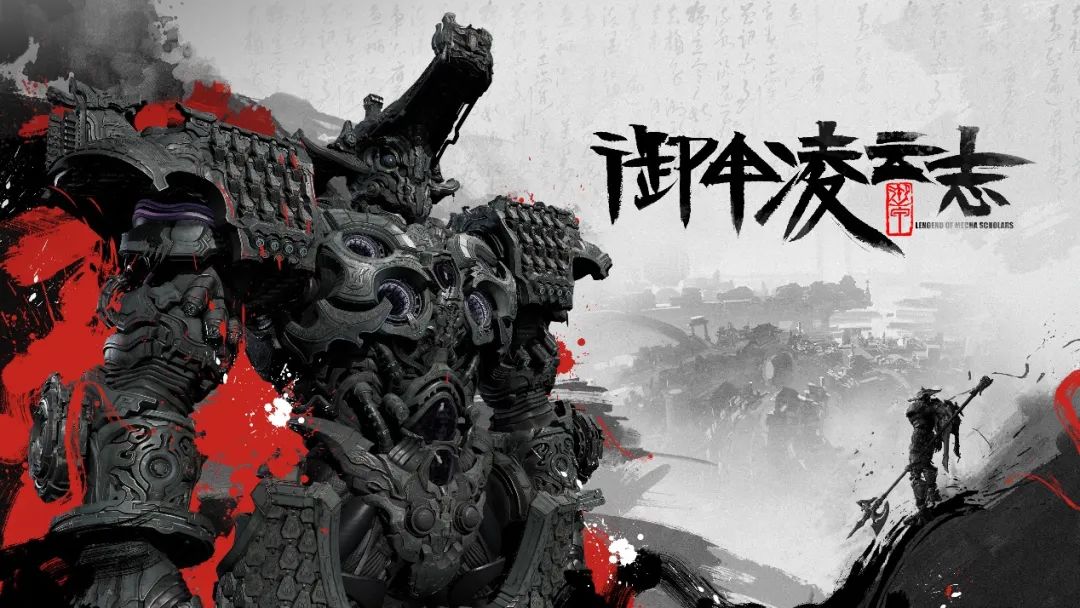
This acceleration is possible because while director teams can conceptualize ideas relatively quickly, traditionally translating these concepts into high-quality visual presentations for review required significantly longer cycles. Moreover, different projects demand distinct artistic styles and varying skill levels from personnel, creating heavy reliance on specialized art talent.
With AI assistance, core creative and conceptual art remains human-driven, while most refinement tasks are delegated to AI. This approach allows humans to focus on preliminary design while AI handles the "manual labor," substantially reducing both workforce needs and time investment, thereby lowering trial-and-error costs. What previously required a team of nearly 20 people working for 8-10 months can now be accomplished by fewer than 10 individuals in about 3 months.
"This also changes team composition requirements," said Zhang Xin. "Previously, we needed several highly experienced professionals to lead a team of nearly 20 artists. Now, just two senior artists, supported by a few junior and mid-level staff, can achieve results that were once difficult to attain."
Ding Yu also noted that creating character concept art previously involved gathering references, team discussions, artists producing line art, and then color drafts—a process that could take a week for a fully colored character. With AI, keywords summarizing team ideas are input by AI trainers to generate images. As training accumulates, AI's understanding of keywords becomes more precise, continuously improving efficiency.
For example, AI tools can produce 40 character designs overnight. These designs are then refined with more specific keywords, such as "American-style yellow T-shirt," to enhance details. From these 40 images, satisfactory elements are selected, their keywords extracted and recombined to generate a new image.
This method reduces communication costs, "shortening the overall time by half or even two-thirds," while also providing richer design options. By selecting preferred elements from AI-generated images and recombining them, final results are improved, achieving effects previously unattainable in shorter timeframes.
Beyond directly boosting animation creativity and productivity, AI has clear applications in animation IP development. Xu Bo, founder of Fenzi Interactive (creator of "Non-Human" and "Beastie"), stated: "Our core business and positioning differ, so AI's value varies. As an IP-focused company, animation is just one content form and stage in our IP ecosystem. We consider AI's value not just for animation but also for comics and IP operations."
For instance, in animation production, the current focus is on AI's assistance with key original drawings and scene creation. In IP development, beyond using AI for subsequent material design and derivative product development, there are also directions like AIGC-generated posters and AI cosplayers, which can play a significant role in marketing.
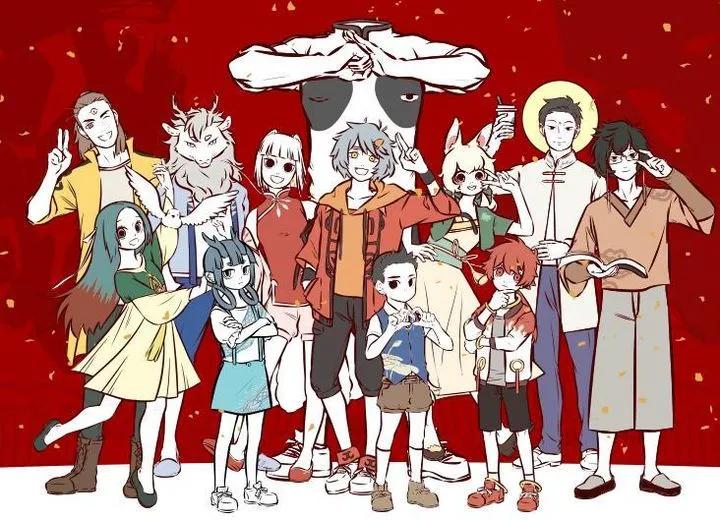
Non-Human IPOverall, animation professionals generally view AI as a new opportunity. As Ding Yu collaborated with Tencent Video, he felt this might be a chance to overtake competitors. This is because current AI is not just a tool to assist in specific stages; the entire industry's development and all production processes may need to adapt to AI holistically. Such potential disruption is worth investing in and experimenting with.
In other words, the industry's expectations for AI go beyond its involvement in early-stage planning to help reduce costs and improve efficiency.
However, meeting higher expectations is not easy. Even for "cost reduction and efficiency improvement," after a year of application, the animation industry has generally encountered certain "bottlenecks."
Among these, the level of technological development is a core factor, but it's not the only issue.
As a platform offering AIGC drawing tools and AI creation services, Wujie AI has been actively engaging in the ACGN field. In the view of Zhao Jiecheng, head of Wujie AI's content center, animation is actually the most difficult area to penetrate.
Comics require fewer technical demands, eliminating the need for modeling or filling in intermediate actions. AI can assist with creativity, line art, coloring, and other tasks, completing most of the work. Human effort is more focused on storytelling, storyboarding, and layout. "In March this year, AI could only assist with 30%-50% of the work, but now it can handle up to 70%." For comic platforms, this solves many core issues and directly creates more room for commercialization.
In China, many game companies separate their concept art and production pipelines to streamline workflows. Zhao Jiecheng noted that to reduce project initiation costs, many games no longer invest heavily in extensive early-stage designs. The emergence of AI has led game companies to significantly cut back on outsourcing concept art, with reductions reaching 70%-90%. Since some games do not directly display concept art but rather use it as a reference for modeling, these modeling references are more easily replaceable by AI.
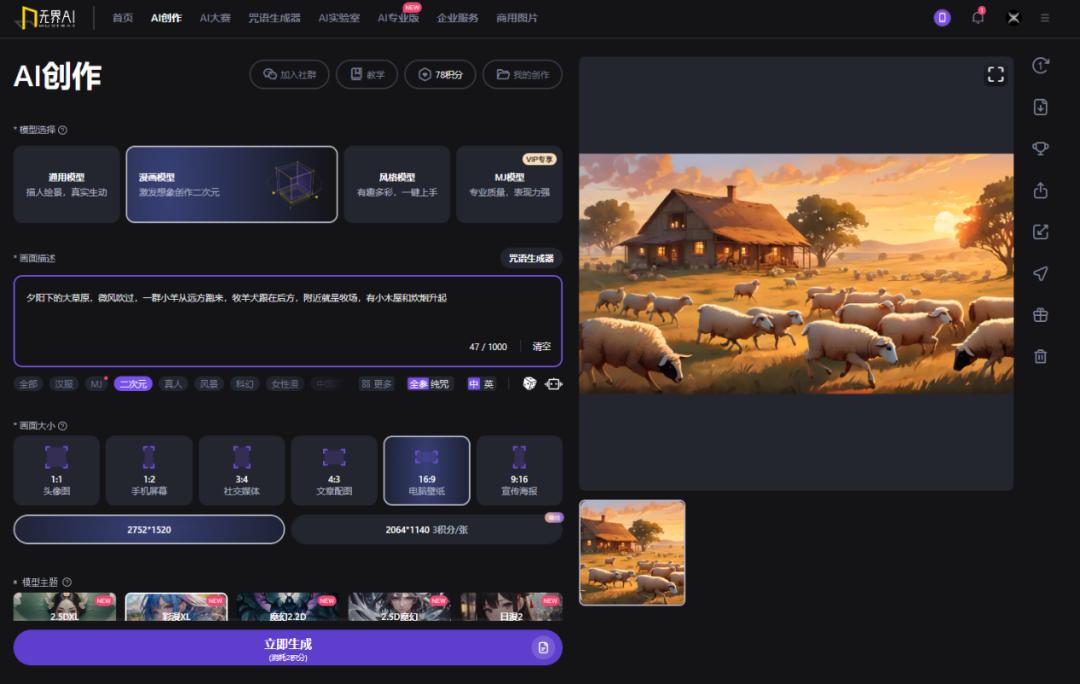
In contrast, animation demands higher standards. Animation requires creating directly连贯的画面, but AI struggles with coherence and light processing. Therefore, from an overall workflow perspective, AI's involvement in animation, especially 3D animation, remains limited unless the entire production process is overhauled—for example, using AI to replace frames after live-action filming.
"Currently, few domestic animation companies use frame-by-frame animation production, as most have their own established workflows. This limits AI's role primarily to pre-production tasks like concept art, scene design, character creation, and coloring," said Zhao Jiecheng.
In reality, production processes vary not only between different animation companies in China but even among projects within the same company. This makes it difficult for third-party providers like Wujie AI to offer standardized solutions, while animation studios themselves face similar challenges when seeking AI tools or developing in-house technologies.
Even widely adopted tools like Stable Diffusion and Midjourney haven't reached the level of specialized development for the animation industry, forcing companies to passively adapt to AI advancements.
Moreover, most small animation studios lack the resources to develop customized plugins, while large companies and platforms find it challenging to invest in R&D that would transform the entire production pipeline.
There are two main obstacles: First, the costs and direction of technological investment remain unclear, with a shortage of talent and no proven business model to recoup costs. Second, using AI for many processes may currently be more expensive or less efficient than manual work.
Tencent Video's AI animation project also underwent intense preliminary discussions. "The 'Magic Journey AI-Assisted Chapter' project represents forward-looking planning that tests the platform's strategic determination."
'AI-Assisted Chapter of Magic Journey'
For many animation companies, such as those producing 2D animation, one of the most significant cost issues is frame interpolation—how to transition smoothly from one action to another.
Yu Tian believes that 2D animation is still far from achieving a state of automation due to hard cost constraints. Although technologies like AI-generated art styles and frame interpolation have been explored for some time, cutting-edge research results are difficult to apply in the industry. Additionally, the required hardware infrastructure could make the costs even higher than manual production. "This creates a paradox," he said.
The primary cost driver in 3D animation is manual keyframing ("hand-K"). Relying solely on hand-K, an annual series might require a team of 200 people working for a full year. Moreover, hand-K is not just a technical assembly-line task—it reflects the animator's artistic sense and rhythm. Some exaggerated movements or effects that go beyond realistic motion capture can only be achieved through hand-K, which is quite common in animation.
Yang Lei, Vice President of Ruo Shen Digital, stated that the Bad Guys series has not yet adopted AI. He estimates that for animations of this quality level, AI applications could account for at most 20%, with the remaining work still requiring a large manual team for hand-K.
On one hand, the current ceiling for 3D film-grade animation lies in hardware limitations. For example, simulation in 3D animation is a highly time-consuming process that relies on computational power. On the other hand, animation demands extensive artistic integration—AI still struggles with tasks like storyboarding, and even if the technology advances, the artistic outcome may not meet expectations. "UE5's Metahuman already has a facial capture system that can directly replace models, but it still falls short of high-quality film-grade content requirements. Hand-K work remains necessary."
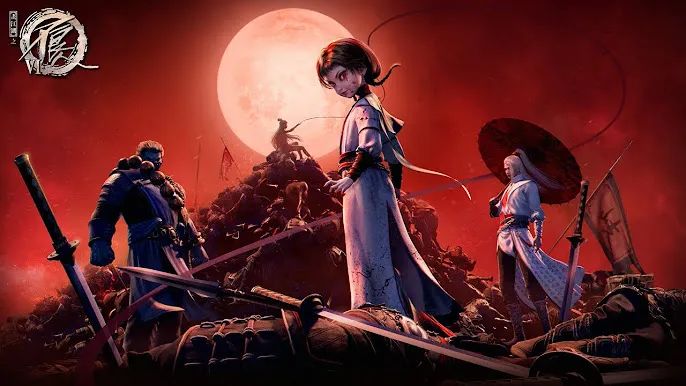
3D Animation 'The Outcast'AI cannot yet replace human labor in certain aspects, but it has already caused significant concern among animation professionals.
Many ordinary practitioners have shifted their focus from worrying about whether AI will replace their jobs to considering what skills will be needed in the AI era. This has led to turbulence in the pricing standards of the animation industry. While large comprehensive animation companies benefit from AI, some small teams with single skill categories and business models are more vulnerable to AI's impact on their personnel structure and service capabilities, facing higher risks in the current direction and environment.
Yu Tian believes that the most vulnerable positions currently are in the conceptual stage, while planning companies and creative talents remain relatively secure. Of course, in the long run, AI will undoubtedly bring systematic changes, potentially eliminating more than one-third of the workforce in the entire process. Assistant-type positions will decrease, with core functions concentrated in the hands of a few.
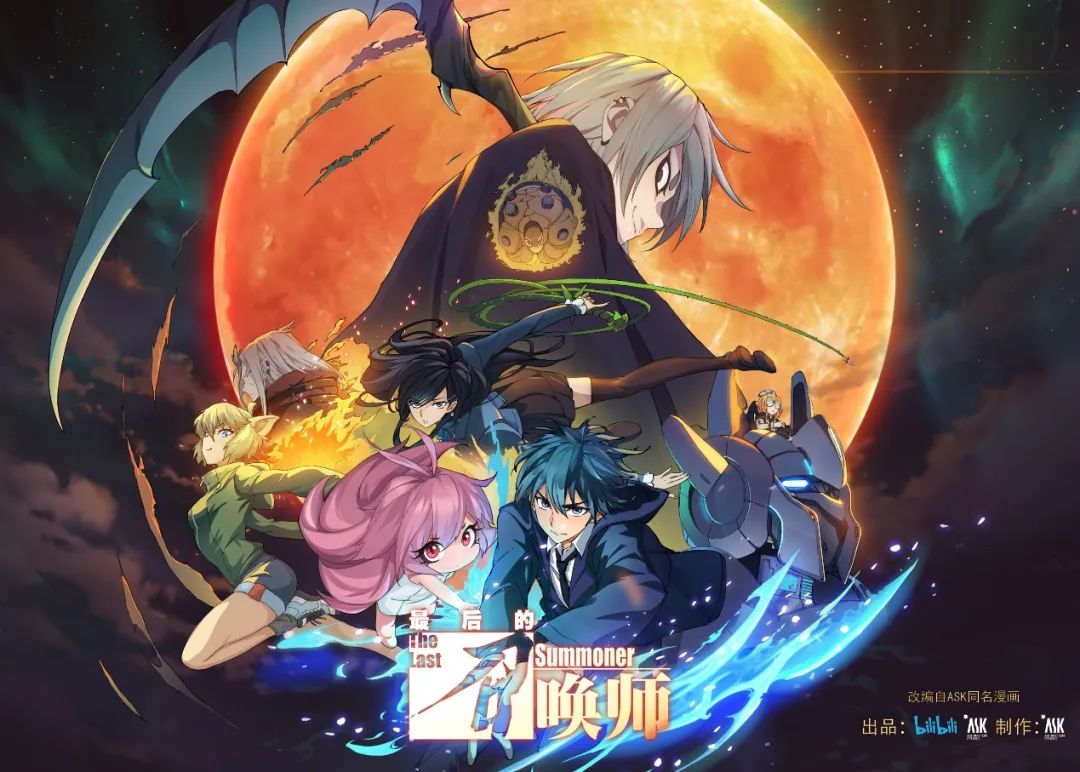
ASK Animation Project Work
This presents entirely different demands for animation talent—when people are liberated from assembly-line work, those who understand their own needs and market demands become even rarer. In the eyes of many animation companies, such individuals possess genuine creativity, which is more valuable than superficial technical skills. Animation production will increasingly shift from execution-driven talent to creativity-driven talent.
For example, strong artistic skills and color theory, which were once essential, can now be better handled by AI. What used to take three hours to draw a scene can now be generated by AI in minutes. However, this requires professionals to have good aesthetics, the ability to develop their own logic and methodology, and the judgment to determine what kind of scene is beautiful and aligns with the project's style, elevating it within the predefined environment.
Under this trend, Xu Bo believes that new specialized roles will emerge, such as AI art trainers. "Such talent is still scarce at the moment. They need to understand how the work was traditionally done without AI, possess solid artistic foundations and aesthetics, and be able to learn and utilize AI through various methods for training and description. This will be a highly valuable skill in the coming years."
For animation companies, finding suitable AI talent at this stage is naturally not easy.
Zhang Xin mentioned that Black Rock Network noticed AI in 2021 and attempted to recruit talent in computer graphics or generative adversarial networks, only to find the field nearly vacant in China. After nearly a year of recruitment, they failed to find a single candidate and had to shelve research in this direction. Even by the second half of 2022, when Stable Diffusion gained traction, recruiting relevant talent remained extremely difficult. The prospects for domestic alternatives to this technology are not optimistic.
The difficulty in recruiting suitable talent stems not only from the pioneering nature of this technical direction but also from the animation industry itself. First, most animation professionals passively accept technology and find it hard to drive groundbreaking changes. Second, in terms of talent development, many still hold an artist's mindset, whereas commercial animation products prioritize content and efficiency. As long as the content is well-expressed, whether the visuals are hand-drawn by an artist or generated by a computer matters little to the audience.
"It may sound harsh, but many people's mindsets are hard to change—they resist new technologies. The current attitude toward AI among practitioners is similar to how traditional artists of the previous generation viewed digital art," said Zhang Xin.
With no readily available talent in the market, companies have had to cultivate skills internally. The evolution of training programs in animation studios reflects the shifting skill demands in China's animation industry—from initially focusing on traditional digital painting to gradually incorporating real-time rendering courses, and this year adding AI modules to teach students how to use AI for creative assistance.
Despite these challenges, animation companies haven't stopped paying attention to AI. The explosive growth of AI over the past year has led many to believe that leapfrog development isn't far off—it might just be "a matter of breaking through a thin barrier."
Ding Yu noted that while there was extensive preparation, the decision to use AI for animation production was surprisingly approved, as major platforms in recent years have generally prioritized cost-cutting and efficiency. Implementing AI for animation production isn't easy. However, AI technologies and workflows suitable for domestic animation studios can only be refined through continuous project experience. If training on AI stops, progress halts.
Current technological advancements are now bringing new possibilities.
Yang Lei has been closely following Wonder Studio, a technical tool, because its development direction directly impacts animation workflows and cost structures—after live-action filming, pre-made assets can be directly replaced to automate tasks like rigging. Although it currently lacks features like cloth simulation, the output quality already has the potential to revolutionize existing animation pipelines and achieve true cinematic-grade applications.
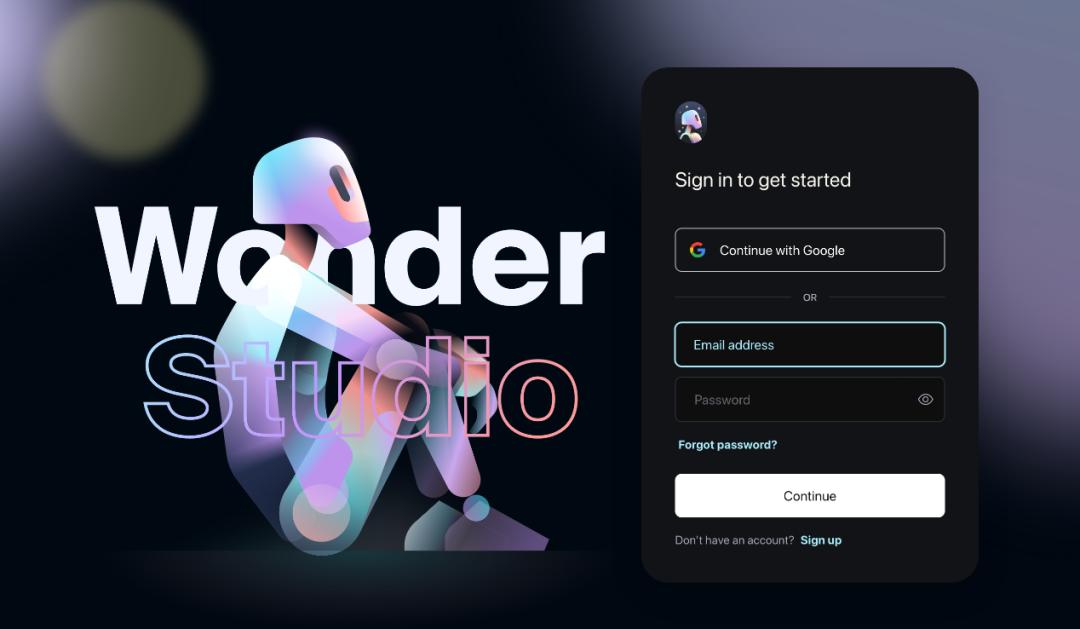
As tools in this direction become more mature, the proportion of manual work may decrease to only 10%-20%. Effects that previously required senior animators may soon be achievable by junior staff, with significantly fewer people needed.
Additionally, tasks like lighting, which previously required rendering to see the results, can now be adjusted in real-time through parameters, achieving a "what you see is what you get" effect and enabling immediate output at high speed. "This might one day make daily animation broadcasts possible," said Yang Lei.
Currently, major tech companies like NVIDIA are exploring this "what you see is what you get" approach, which could also trigger massive changes in the animation industry's processes and structure.
Zhang Xin believes that the traditional 3D animation industrial workflow involves over a dozen steps, including modeling, animation, lighting, special effects, and compositing, before the final product appears on screen. The ultimate form of AI will likely skip all these intermediate steps, eliminating the need for such processes and saving significant costs.
"Right now, AI is still assisting creators in generating preliminary images and ideas. I believe that in the future, AI won't just accelerate individual processes like modeling and rendering but will directly dismantle the current animation production pipeline to deliver the final rendered result. With sufficient computing power, AI tools will produce content that's immediately viewable—this will be a revolutionary change."
In this process, animation companies can also build future-proof competitiveness. This includes training their own model libraries in advance and establishing workflows tailored to their unique style, considering director requirements, project timelines, quality, and costs.
The richness of model training, personalized styles, and copyright are all directly related to the material library. Yu Tian mentioned that training models based on a company's internal stylized materials could resolve copyright issues. At the same time, it not only maintains the company's creative style but may also generate unexpected results, broadening creative directions and ideas for further development.
Continuously training models tailored to company needs using proprietary materials can turn these assets into a core competitive advantage for animation studios, expanding the boundaries of their business models. For example, Black Rock Network, in addition to its animation business, is also developing its own games. By applying new AI workflows and model libraries to game development, they aim to shorten the pre-production cycle and achieve the simultaneous release of their next animation and game.
From the perspective of the entire animation industry, beyond animation studios, individuals may also experience transformation—AI technology is making animation increasingly reliant on personal talent and style. The emergence of various AI tools lowers the barrier to animation production, potentially making user-generated animation content (UGC) more common. This could also create opportunities for animated short videos.
